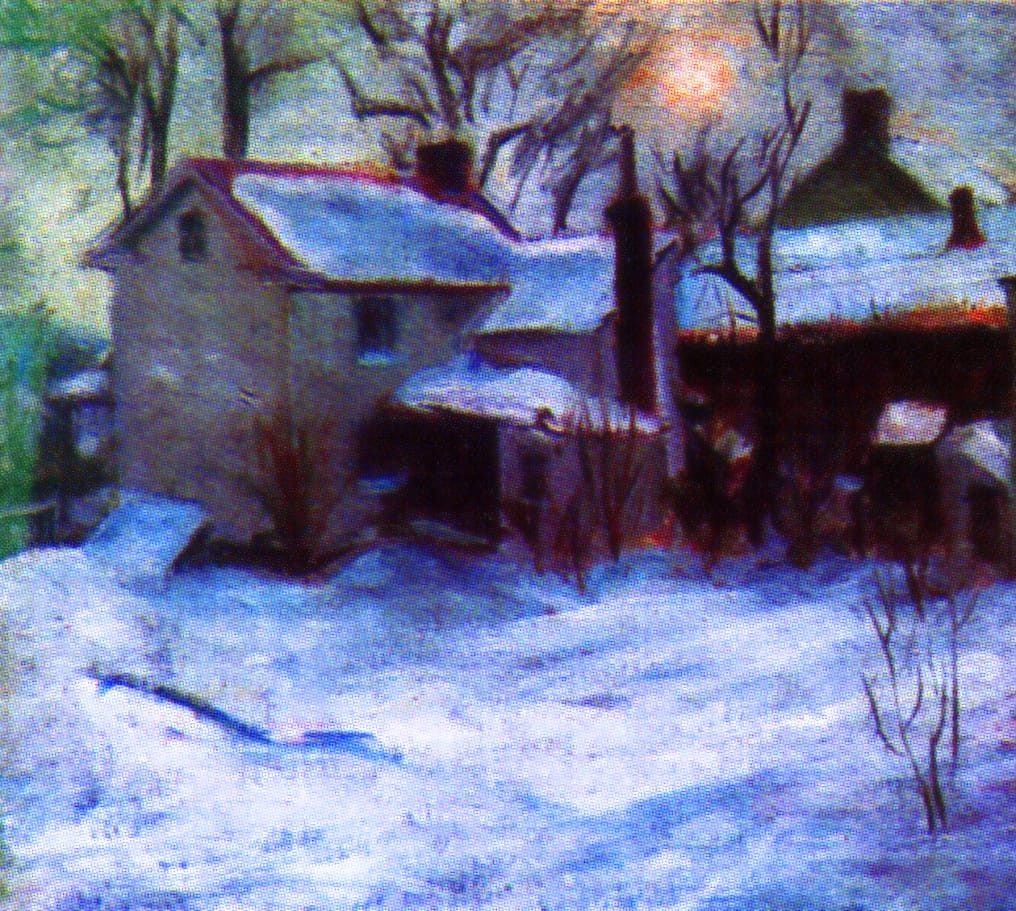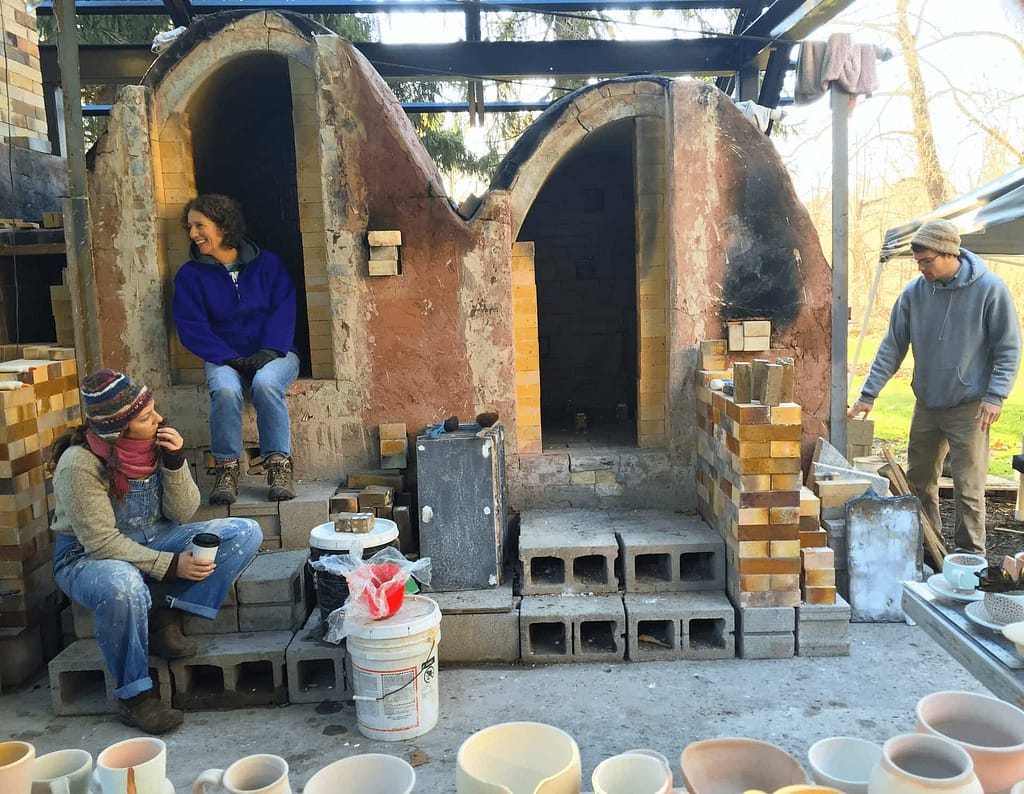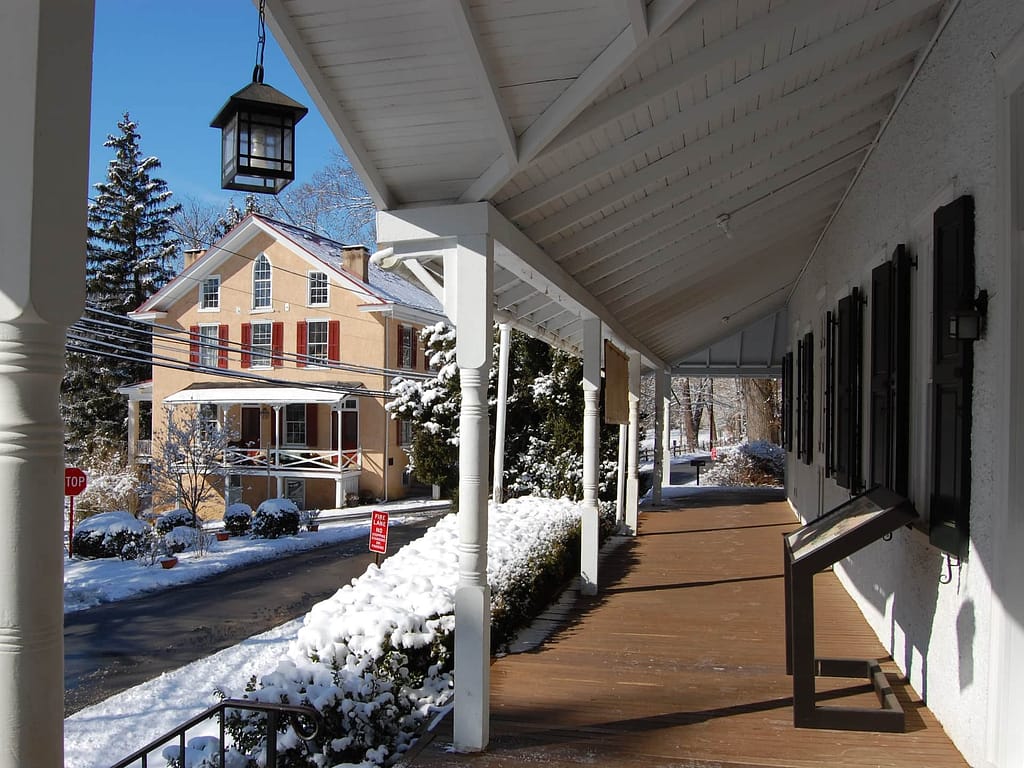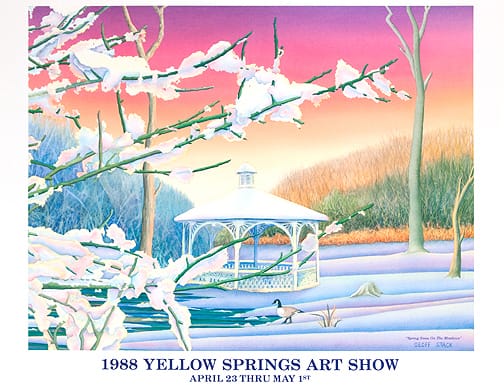Painting in winter sessions
Site 5
The Country School was so successful that in the winter of 1927-1928, the Academy arranged not only for students to live and paint in the village, but to receive criticisms from the Philadelphia instructors. Proudly announcing “the remarkably good work” of the first winter session, manager D. Roy Miller described the attractions of painting the landscape in winter: the special effects of the winter sunlight, the case of seeing the houses through the bare branches of the trees, the “beautiful coloring of the bare fields,” and even “the comparative case of working in the cold if the artist is warmly clothed and interested in his or her work. (The American Magazine of Art, 1929)
Doris Kanzie Weidner attended the “Winter School” (October-May) from 1931 to 1933, and returned many summers in the late 1930’s and 1940’s to live and work here. This luminous painting demonstrates the artist’s proficiency at rendering the effects of sunlight diffused by snow. As Mr. Miller pointed out, good work was to be expected from students whose distractions and entertainment consisted of “viewing the school moving pictures, or slides of art objects projected on the screen, or listening to the radio, or (for those more actively inclined) skiing, tobogganing, and skating when the weather is favorable, and hiking, or hare-and-hound chasing when there are no snow and ice.”
Continue walking east along Art School Road to the Yellow Springs Cultural Center, the large 1845 barn structure on the left-hand side of the road.






